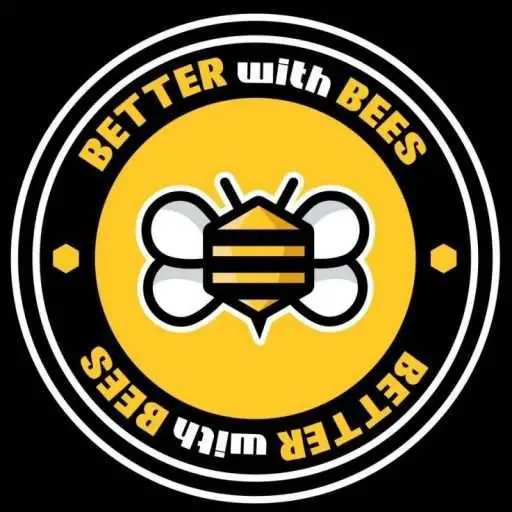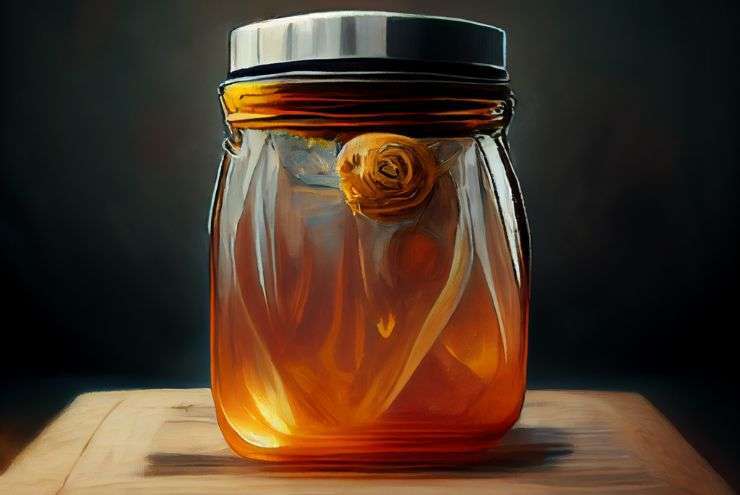When starting out in beekeeping, you may be wondering how much honey per hive you’ll be able to collect. The honey yield per hive can fluctuate wildly depending on what the conditions of your locations are.
A hive can produce anywhere between 20 and 400 pounds of honey per hive or 10 and 200 kilograms per hive. This means that not establishing proper care of your hive can make the difference between no surplus honey and more than you could ever know what to do with.
There are plenty of ways to increase honey yield for your hives, through elements like weather, your local ecosystem, and hive management. The most important thing to remember, though, is that your bees need honey too. Don’t forget to leave enough for them each season to survive the winter.
How is Honey Produced?
First let’s talk about how we get honey. Bees produce honey by collecting nectar from flowers and breaking them down into simple sugars. These simple sugars are stored in honeycomb.
Due to the shape of the honeycomb, as well as elements like the flapping of bees’ wings, simple sugars then evaporate into liquid honey. The color and flavor will be dependent on the nectar that bees gather. Bees will then use this honey to feed themselves over the course of winter.
What Factors Affect Annual Honey Production?
Keeping a close eye on your hive and the surrounding environment can increase your honey yield by hundreds of pounds, so it’s worth it to make an effort. Here are some of the primary factors that affect how much honey per hive you can get.
Bee population in Hive
A single bee produces about one-twelfth of a teaspoon of honey in its lifetime, so a hive needs an army to reach high production levels. The average hive contains somewhere between 20,000 and 80,000 worker bees
There runs some risk with artificially encouraging bee population growth, so allow it to build naturally. If you do choose to help the population along through simple syrup feedings or pollen supplements, do so carefully and consistently until the bee population is strong again.
Age of Hive
For the highest honey yield, you’ll want to let your colony grow as strong as possible. Leave your hive alone for its first season to build up its numbers.
A bee population that has fully established itself over the course of the first season will drastically improve how much honey you can get from one hive.
Bee Type
There are several different genetic varieties for your queen bee and these can all impact your honey production. Many of the bees that are best for producing honey come from the Apis genus.
The Apis Mellifera or the European Honey Bee is often the most highly recommended bee for those just starting out. Other well producing varieties include the Italian Honey Bee (Apis Mellifera Ligustica) and the Gray Honey Bee (Apis Mellifera Carnica).
Best Weather for your Bees
Bees enjoy warmer weather. Worker bees tend to go out foraging when the temperature is at least 80 degrees fahrenheit or 16 degrees celsius. The longer your climate stays in these temperatures, the higher your honey yield per hive.
Heavy rains and strong winds will also reduce your honey yield as bees find it hard to fly in these conditions. The rains can also wash away the nectar on the flowers, leaving less for the bees to collect.
Bee-friendly Plants
Bees produce the honey courtesy of the nectar from flowers. They also tend to stick within a two mile radius of their hive, so your yard or property is going to be a prime hunting ground for nectar. Fill your garden with as many bee friendly plants as you can to keep your bees as productive as possible.
Choosing the right kind of flowers is important. You’ll want plants with wide,open style flowers for easy access. Bees are the most productive during nectar flow, when native flora are in bloom. For the highest honey yield per hive, add a variety of different seasonal flora. A different bloom for spring, summer, and fall will be sure to keep your bees busy.
A bee friendly wildflower pack can be found at your local hardware store for the easiest solution. If you want to plan a garden, you can use wildflowers like violets, dandelions, and clover or you can have some agricultural crops like fruit trees, berries, squash, or soybeans.
Diseases and Pests
Disease and pests can ravage your bee hives and reduce honey production. This will be where practicing good hive management becomes the most important. Observe your hive regularly and keep an eye out for anything that could harm your hive.
Here are some of the most common ones to watch out for
Diseases
- American or European foulbrood
- Chalkbrood
- Sacbrood
- Bee parasitic mite syndrome
- Paralysis
- Nosema
Pests
- Varroa mite
- Tracheal mite.
- Small hive beetle
- Bee louse
- Greater wax moth
- Mice
Predators
Predators, much like your climate, depend on your region. Predators can do more than just steal some honey, they might destroy the entire hive. Be sure to research bee predators in your area when planning your hive.
Predators can range from animals dangerous to your bees like skunks, birds, and wasps, to animals dangerous for you as well, like bears. Not protecting adequately against predators can seriously affect how many pounds of honey per hive you are able to get.
The best way to protect against predators is to create a barrier between the hive and the intruders. This can be something big like a fence or screen, or something as simple as lifting your hive off the ground.
Robber Bees
Wild honey bees that find themselves in your area may attempt to rob your hive of honey. You may notice the bees pushing out a lone bee if an invader is present while you are observing the hive.
You can help fight against robber bees by closing off the hive when you notice a commotion. If that doesn’t work you can use barrier methods such as a wet cloth or vicks vapor rub, or move the hive as a last resort.
How Much Honey Do Bees Need to Survive the Winter?
Bees produce honey as food for the winter. Instead of hibernating, like other insects, they cluster around the queen and produce heat to keep warm by vibrating their bodies. They maintain this energy through their honey stores.
The winter storage for honey bees is entirely dependent on how long and cold winter gets in your climate. In warmer climates, bees only need about 40 pounds, or 18 kilograms for the year. However, as the cold weather gets more extreme, that number can get up to 90 pound or 41 kilograms.
A strong hive will produce enough that they should have 2-3 times more than what they need, but you’ll need to leave aside extra for weaker hives. A weaker hive should always have at least 3 or 4 full frames of honey. Know the conditions in your region, and harvest on the side of caution for your first few seasons of honey collection.
How Many Hives Should I Start With?
It’s often recommended to start with two hives when you begin beekeeping. This provides a safety net, should one of your hives get wiped out. As much as we prepare to protect our hives, there are always factors out of our control. A second hive can keep your beekeeping hobby going without a complete restart.
Having two hives also allows you to compare and contrast in order to better understand patterns and behaviors of your bees. This will help you identify problems if only one of your hives is exhibiting abnormal behavior.
Don’t worry about the bees getting confused, either. Each hive has a unique smell that helps bees find their home. Just keep the hives at least 8 inches from each other and they should do well.
How Many Frames Should My Hive Have?
One full depth Langstroth frame can yield on average 8 pounds or 3.6 kilograms of honey per year, while one medium Langstroth frame can yield on average 6 pounds or 2.7 kilograms of honey per year.
The traditional size for bee hives is ten frames, although some beekeepers are now praising the benefits of a smaller, 8 frame, hive for ease of use and a flourishing hive.
All The Delicious Honey!
So how much honey per hive can you get? On average about 50 pounds. The amount of honey per hive is dependent on several environmental factors, your own hive management techniques, and the size of your frame and hive box.
However you go forward with your beekeeping, remember that honey production can vary wildly. Take steps to give your hive the best chance and make a difference in your honey production per hive.
FAQs
A 10 frame full depth Langstroth hive should produce on average 80 pounds of honey per year
An 8 frame full depth Langstroth hive should produce on average 64 pounds of honey per year

